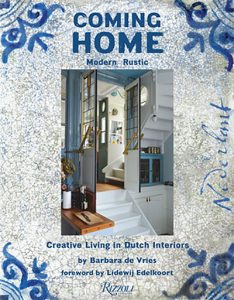Barbara de Vries: Designer, Book-Maker, Activist, & Former Model

BARBARA DE VRIES was born in Amsterdam, where she entered fashion by making clothes for herself — plus satin pants for friends in bands, carved leather belts, and hippy-ish jewelry.
At age 17 de Vries became a model and lived in Paris, where she did couture shows and fashion ads for ELLE and Marie Claire. She then moved to Australia where she became a Cosmo cover girl as well as the infamous Razzamatazz girl. She settled in London, where she modeled for Vogue, Bazaar, and Zandra Rhodes before giving up modeling and attending St. Martins, Harrow and the Royal College of Art, to study fashion.
She briefly worked as a designer for Stirling Cooper before creating a collection for the movie star Faye Dunaway’s boutique in Santa Monica, which was the start of her own (punkish) collection in London called Giraf.
After ten years in London, she moved to New York to launch CK for Calvin Klein.
After meeting her husband to be, she went freelance and designed a collection under her own name in Japan as well as the USA, and after the birth of her first daughter, she added children’s wear to her brand.
As a freelance designer and creative director, de Vries worked on projects for Ralph Lauren, Dim, Petit Bateau, Go Silk and Pantone, all from her studio in Milford, Pennsylvania.
She first spotted plastic on the beaches of Eleuthera in 2006, and became passionate about combating ocean plastic pollution. De Vries founded “Plastic is Forever.”
She moved to Miami in 2009 and started producing, designing and publishing books in collaboration with her husband, the writer and critic, Alastair Gordon.
In 2015, missing the texture of beautiful fabrics in her life, de Vries returned to the studio and started designing and making clothes again.
“Some of my favorite moments are when we are all in our rooms, creating. The girls are working on their designs for DASH – art, fashion or graphics – Alastair is writing or painting in his studio and I am cutting fabric or sewing a silk slip in my atelier. Our home is filled with our work, it is designed to be our studio, making life into art.”
The videos below are organized by topic and run between 30 seconds and 3 minutes. Click on any video. You must be connected to the Internet to view the videos.
CRITICAL THINKING: 1:22 min.
CREATES A UNIQUE PERSONAL BRAND: 1:37 min.
INSIGHT AND INSPIRATION: 1:06 min.
CREATIVE FLEXIBILITY: 1:58 min.
OPEN TO CHANGE, FLEXIBILITY: 2:34 min.
COMMUNITY VALUES: 3:02 min.
RESPECTS OTHERS’ POINTS OF VIEW: 1:55 min.
COLLABORATION: 0:25 min.
SELF-CONFIDENCE: 2:08 min.
INSIGHT AND INSPIRATION: 2:53 min.
DEVELOP A VOICE: 1:28 min.


